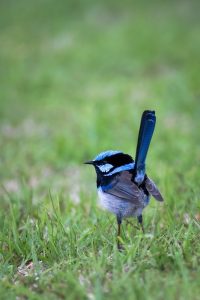4 How Do You Learn Best?
Learning Objectives
After completing this chapter, you will:
- Be able to consider your strengths and challenges when working with others.
- Have an understanding of some suggestions for growth.
You will also have completed the following activities:
- A learning styles quiz
- A Welcome to Me resource and
- A Group Strengths quiz
Introduction:
Now that you understand some of the key terms to use when looking at disability, we’re going to have a look how you might learn effectively.
We all learn in different ways and have different strengths and weaknesses. Thinking about our strengths and weaknesses can help us in identifying what we do well and areas where we may need to improve. For example, you may be great at planning, but really struggle to start writing a task. Or you may learn better when information is given to you verbally.
Have a think about some of your strengths as a learner. What activities excite you? Do you prefer visual, auditory or kinesthetic (touch-based) learning? Do you enjoy presenting in front of a group of people?
It’s okay if you don’t know yet; this chapter will help you find out!
Interactive Activity: Learning Styles Quiz
Your first activity is to complete a free learning styles quiz. This quiz is important because we all learn in different ways. Knowing your learning style will help you figure out how you learn best and allowing you to ask for help if your team is not supporting your learning needs.
It will take about 5 minutes to complete. All you need to do is put your gender, age range and reason for completing the quiz (put which reason feels best). Then start the quiz.
At the end of the quiz, there is an option to input your email address to receive a copy of your results. Please be aware that this link is hosted by a third-party site and providing your email address is not required in order to access the results
Complete the quiz, at the Learning Style Quiz website.
Once you have your results, read through them and reflect on these prompts:
- Is there anything you are surprised about?
- What did you learn about yourself?
No one learning quiz will perfectly capture who you are as a person, but the more you reflect on your abilities and strengths, the better you will understand yourself. Knowing your strengths, weaknesses and areas for growth are incredibly valuable, not only at university, but also when you go into the workforce.
Interactive Activity: Welcome to Me
Welcome to Me is a resource for you to fill out to reflect on who you are as a person and what you need to succeed. Try to be as detailed as possible.
At the end, download and save the document for you to refer back to, and for sharing the information you feel comfortable to with your teammates. This might include things like communication preferences, availability for meetings, any challenges with working with others, or anything else you think is important to consider when working with others.
Copyright note: The image ‘Plant Growth’ (2019) by _Alicja_ in the above activity is available via Pixabay and is used under the Pixabay Content License.
Copyright Note: The content in the Welcome to Me activity has been adapted from “What is disability? Speaking Me, Hearing You: A learning toolkit for talking about disability” by Rebecca Muir and Deakin University’s Diversity, Equity and Inclusion (DEI) Team ©Deakin University 2024 and is licensed under CC BY-NC 4.0.
Activity Text Version
Interactive Activity: Welcome to Me
This resource is for you to reflect on how you work, what your strengths are, what you may find challenging, and how other team members can help you.
Only share what you feel comfortable with but be as open as you can. The more information you can share with your team, the better you will all be able to work together.
Remember to download and save your answers at the end so you can share with your team.
Students then click through 5 different prompts which ask them to reflect on who they are and how they learn. The prompts are listed below:
I am…
You can use some of the questions as a prompt or respond to “I am…” with whatever comes to mind! You can use dot points or full sentences to answer.
- On a scale of 1 to 10 (1 being introvert and 10 being extrovert), where do you sit?
- What three action words would you to describe yourself?
- How do you show your friends that you care?
- What do you value when working in a team?
- How do you recharge your social battery?
- How do you give your brain a break?
- What is your learning style?
Ask me about…
You can use some of the questions as a prompt, or respond to “Ask me about…” with whatever comes to mind! You can use dot points or full sentences to answer.
- What makes your eyes sparkle?
- What excites you to talk about?
- What is one thing you’ve accomplished in your life that you are most proud of?
- What is something interesting that you are currently learning about?
Tell me with…
You can use some of the questions as a prompt, or respond to “Tell me with…” with whatever comes to mind! You can use dot points or full sentences to answer.
- How do you preferred to be communicated with?
- What was the most helpful piece of advice you have ever received, and how was it provided?
- What was the most challenging piece of advice you have ever received, and how was it provided?
- What’s worked best to support you’re learning in the past?
- The best book contains…
I work best when…
You can use some of the questions as a prompt, or respond to “I work best when…” with whatever comes to mind! You can use dot points or full sentences to answer.
- What are your expectations of others in your team?
- What are your expectations of yourself?
- How do you prefer to deal with conflict?
- What’s the best way to give you advice?
- How do you prefer to give feedback or ask questions?
- How do you deal with unmet expectations?
- How do you best receive performance feedback?
- What a “safe group environment” feel like to you?
- Do you prefer to have lots of tasks on the go at once, or finish them in order?
- Where do you work best?
- What does “best work” mean to you?
- How do you measure success?
- How do you reflect on your successes?
I struggle without…
You can use some of the questions as a prompt, or respond to “I struggle without…” with whatever comes to mind! You can use dot points or full sentences to answer.
- When you ask for help, what does ‘help’ look like to you?• When you say “I have too much on at the moment”, what would help you change that?
- What are some signs you may need help, but be unable to ask for it?
- When your team has a meeting scheduled, what information helps you feel comfortable going into that meeting?
- What does constructive feedback look like to you?
- When you say “I’ve given up”, what would help you change that?
End of Activity Text Version
Interactive Activity: Teamwork Style
Complete this quiz to see what Australian animal best represents your teamwork style. It will help you to see the ways others communicate, and how your learning style may fit within that. It will also help you develop confidence in yourself and how you work within a team.
You may think you are more of a mix of all the animals, or one stands out. There is no right or wrong answer, this is simply another way to help you find your strengths when working with others.
The four animals are described in detail below if you would prefer not to complete the quiz.
Created by Teagan Menhenett, © Deakin University 2024, licensed under CC-BY-NC.
Copyright note: The images in the above activity are used under the Pixabay Content License.
For reference, these are the four Australian animals in the quiz.
*Throughout this resource you may see little pictures of these animals. Wherever you see one of these images, it is suggesting that the activity, information, or resource would be helpful to you if you identify with the characteristics of this animal. *
Blue Wren
Blue Wren Qualities:
Strengths:
- Being able to provide a ‘birds-eye-view’
- Seeing gaps in the task
- Getting to the “heart of the issue”.
Weaknesses:
- You may find yourself taking on too much of the admin role rather than it being shared among the team.
- You may also value group harmony over difficult conversations.
Growth:
- Learning how to set boundaries and have conversations if something is bothering you.
Wombat
Wombat Qualities:
Strengths:
- A deep thinker
- You do your research and know what is what.
- You are steady and calm and help keep others on task.
Weaknesses:
- You often find yourself set in your ways.
- You may find yourself avoiding difficult conversations with others.
Growth:
- An area of growth for you is learning how to respectfully disagree with others and looking at things from a different perspective.
Kangaroo
Kangaroo Qualities:
Strengths:
- You are confident and motivated.
- A high level of energy and purpose and will get things done asap!
Weaknesses:
- Your high levels of energy may reduce as the task goes on.
- You may find yourself dominating conversations within the team.
Growth:
- Learning to breaking down tasks into smaller chunks to keep your motivation going throughout the project.
Echidna
Echidna Qualities:
Strengths:
- Your ability to pick up lots of new ideas
- Being a curious and fast learner
Weaknesses:
- You can find it difficult to pick one idea out of all the ideas in the air.
- You can find it difficult to follow an idea all the way to completion.
Growth:
- Learning how to break a big task into smaller chunks so it’s easier to complete.




Copyright note: The above images are used under the Pixabay Content License.
Further Information:
For further information about how different brains might think, have a look through the article below which discusses different autistic thinking styles. Specifically, it talks about visual thinkers, verbal/logic thinkers and pattern thinkers. It also talks about the differences between bottom-up, associative, analytical and lateral thinkers (Silvertant, 2023).
Even if you do not identify as autistic, this could be something you are interested in learning about when working with others in your team. Feel free to visit the website and read through in your own time.
Key Takeaways
- We all have different styles of learning and needs when it comes to working in a team. Reflecting on your strengths and areas for growth is important to not only improve your own self-awareness, but also your understanding of others.
These are some of the words you may have come across in this chapter:
Strengths and Weaknesses
Knowledges, attributes or characteristics of a person that are considered well developed, or something they are good at.
Knowledges, attributes or characteristics of a person that are considered less developed, or something they are not yet good at.

